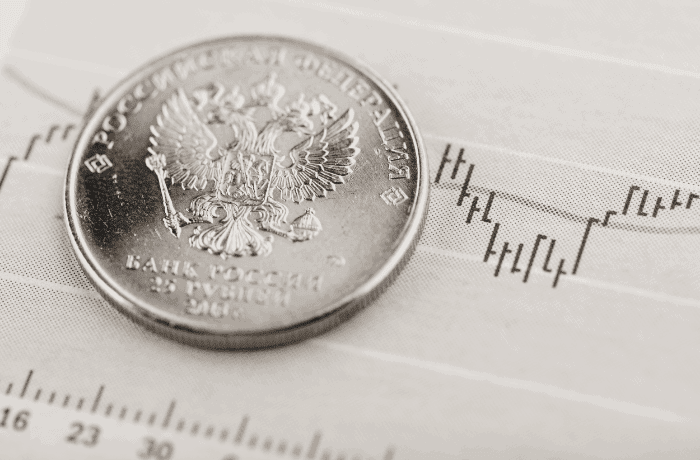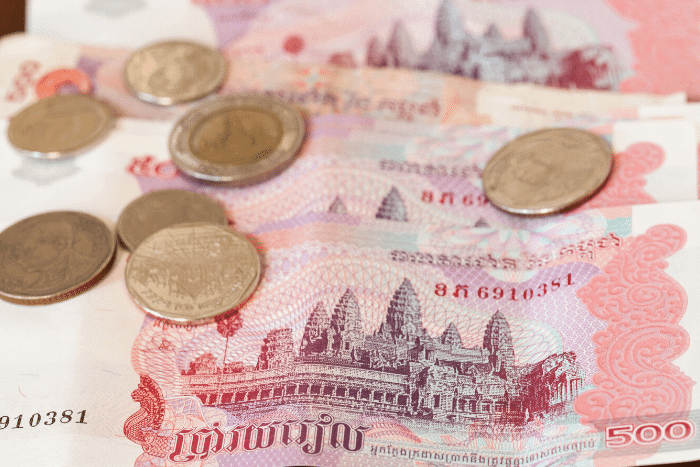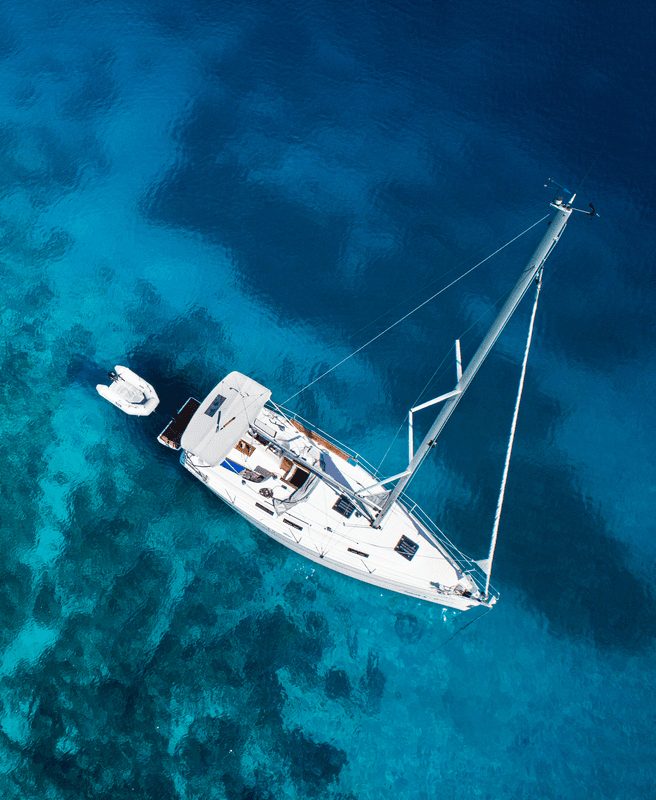The Most Stable Emerging World Currency
October 21, 2022
Dateline: Kuala Lumpur, Malaysia
If you want to increase the return on cash you hold in depository accounts, you can use emerging world banks to earn higher – even dramatically higher – rates of interest.
Here at Nomad Capitalist, we believe that well-positioned offshore banks are just as safe as many of the banks where you may live.
Not only can you earn much higher interest rates on base currencies such as the U.S. Dollar or Euro, but if you want to earn the maximum rate possible – double-digit rates in some cases – you could accomplish that by holding stable emerging world currencies in emerging world banks.
Whereas the interest rate on U.S. Dollar deposits in the United States is generally 0% or nominal at best, the same U.S. Dollars held in an emerging world bank may earn somewhere between 3-4%.
And, if you were to convert those same U.S. Dollars into an emerging world currency, you could stand to gain more like 6-10% on interest, or even as high as 15%, depending on the specific currency in question.
But naturally, the greater potential return comes with an increased risk. And so, when considering whether to hold cash in emerging banks and whether to do so an emerging world currency account, it is important to analyze and evaluate both the quality of the emerging economy as well as the banking institution itself, since both factors are directly associated with risk.
When evaluating the bank itself, or multiple banks if you so choose, you might be surprised to find that there are generally more bank failures within the United States than you’ll find on average in other parts of the world.
At Nomad Capitalist, we believe that with proper research you can find quality banking institutions operating in emerging economies where you will feel secure in your investment.
That is not to say that it is without risk, so you must also analyze the underlying economy, together with political risks, since a failure of either the economy or the institution may result in significant loss.
Selecting an Emerging World Currency
Once you have chosen the emerging world economy and banking jurisdiction, you will have the option to determine which type of currency you want to hold.
Generally, most international banks offer a wide variety of currency accounts. Smaller, regional banks will typically offer some variety of currency accounts as well. And nearly all will allow you to hold cash in base currencies such as the U.S. Dollar or Euro, in addition to the local or regional currencies used in the host economy.
If you prefer to hold your cash in a base currency such as the U.S. Dollar, then your return on interest will generally be less than as compared to holding the cash in an emerging world currency, but nevertheless still substantially higher than if you had left the cash sit in a bank located within the United States.
But if you’re able to identify emerging world currencies which are relatively stable as compared to base currencies and you’re willing to take on the added risk, then you stand to increase your return substantially by investing (or holding) your cash in the emerging world currency as identified.
And so, to give you some idea of how this may play out in practice, we at Nomad Capitalist have analyzed a wide range of emerging world currencies, and specifically their performance over the past five years, from the period of January 2015 to January 2020.
We analyzed currencies that we typically follow, as well as other more obscure currencies, and found that some emerging currencies have completely collapsed during the period. The Turkish Lira, Columbian Peso, and Egyptian Pound for example, have performed terribly, just as have some other South American and Central Asian currencies.
But we also identified other currencies that have been fairly stable and performed rather well during the period; namely, the Russian Ruble, Cambodian Riel and Armenian Dram, in addition to a few wildcards, the Ukrainian Hryvnia, Azerbaijani Manat and Kazakhstani Tenge, all of which we’re watching closely.
Here is a brief overview of their performance.
RUSSIAN RUBLE

During the five-year period that we analyzed, the Russian Ruble performed the best as compared to the U.S. Dollar.
At the beginning of the period in 2015, the Ruble was trading at 69.2 to 1 USD and by the end of the period it was trading at 62.6 to 1 USD; representing an approximate 10% gain over the period on the currency itself, and excluding the additional gain on interest you would have earned annually.
Given that the interest rate during the period was approximately 7-8%, you would have enjoyed substantial gains had you held the Ruble during the five-year period.
This is not to say that there is no risk, and in fact the Ruble was quite volatile during the period just prior to the five-year window we analyzed.
If you recall at the time, Russia had annexed Crimea, and the Ruble, which had been very strong and trading in the low 30s as against the U.S. Dollar, plunged to a low of nearly 80 Ruble to 1 USD before starting its slow recovery to current levels.
This type of volatility aptly demonstrates the fact that just one event can dramatically affect the value of an emerging world currency, and so it is of paramount importance that you not only understand the underlying local economy tied to an emerging currency but also the associated geopolitical risks.
Nevertheless, the historical numbers as reviewed under the five-year period indicate that you would have done quite well had you held the Russian Ruble during that period.
Just as with most any investment, this example further demonstrates that timing can be of utmost importance.
CAMBODIAN RIEL

Cambodia is a country that we talk about quite a bit. As many of you know, I have personally invested in the country.
The Cambodian Riel generally floats at approximately 4000 Riel to 1 USD. At the beginning of the five-year period, it was trading at 4062 Riel to 1 USD and at the end of the period it was trading at 4057 Riel to 1 USD, so effectively no change.
This is typically what you will find since the Cambodian government has managed to keep the Riel very stable, at least from a historical perspective.
The likelihood of continued stability is further supported by the fact that a number of foreign banks and financial institutions have come into the Cambodian market, including Malaysian, Korean and Canadian institutions. This is indicative of the fact that there is a fairly wide perception of stability.
Now, if you prefer to hold U.S. Dollars in Cambodia, the banks will certainly allow you to do so, but the interest rates on U.S. Dollar deposits have dropped from what was a range of approximately 5.5% to 7% interest to what is now only 3.5% to 4%.
While this is still quite a significant return as compared to holding the same cash in a U.S. bank at a nominal rate, it is nevertheless not as attractive as holding the deposits in Cambodian Riel, since the interest rates on Riel range from 6% to 6.5%, and possibly even higher depending on the length of the term.
If you are able to commit to a 2-3 year term on the deposit, then you will likely be able to negotiate an even higher rate.
Given its relative stability, holding the Cambodian Riel in two- or three-year certificates has shown to be not so dissimilar from holding the U.S. Dollar, at least from an historical perspective.
And if you had been holding the Riel over the five-year period from January 2015 to January 2020, you would have done rather well.
ARMENIAN DRAM

The Armenian Dram is another interesting currency since the underlying economy is showing signs of potential and I like the general track this country is on. Looking forward, I’m interested to see how recent reforms play out as proposed by the government.
At the beginning of the five-year period, the Armenian Dram was trading at 476 to 1 USD and at the end of the period it was trading at 478, so essentially a push, and completely stable in relation to the U.S. Dollar.
But significantly, the Dram paid out approximately 9.5% to 10.5% interest on deposits during the period, representing substantial annual gains, and irrespective of the fact that there was no change in the value of the currency itself.
Armenian banks are also interesting given their relative position in the region. If you don’t like going to Russia or can’t get the requisite visa to get in, you can also hold the Russian Ruble in a neighboring state in the region like Armenia or Georgia.
UKRAINIAN HRYVNIA

The Ukrainian Hryvnia is another interesting emerging world currency if for no other reason than it demonstrates another level of risk.
As you know, I have previously gone on record and I am not suggesting or endorsing the Ukrainian Hryvnia as an investment.
We have identified troublesome issues with Ukraine’s banking system in the past and the Hryvnia demonstrates a level of risk most investors would not tolerate.
It is nevertheless useful by way of analysis, since it illustrates that the strategy of investing in emerging currencies can play out in your favor, if timely executed, even though the underlying conditions are quite volatile and risky.
In January 2015, the Ukrainian Hryvnia was trading at 22.5 to 1 USD, and then moved to 24.6 to 1 USD by January 2020, representing a drop of approximately 9% over the period.
And, if you look back a little further, within a period of just a few months, you’ll find an even more dramatic drop.
So, while the timing may be a bit misleading in the overall environment, the historical numbers nevertheless indicate a 9% drop in the Hryvnia’s value against the U.S. Dollar over the five-year look back period, which is admittedly significant.
However, given that you would have enjoyed an approximate 15% return on annual interest over the same period, you would have more than made up for the drop in the currency value, and in fact would have done rather well overall.
But again, this is not an endorsement, and chasing a 15% rate of return on interest is generally not a strategy for success.
It does demonstrate the potential gains which can be had by investing in emerging world currencies, even though the underlying conditions may be quite volatile.
And perhaps more importantly, we at Nomad Capitalist are interested to see where Ukraine goes moving forward and whether the new government will be able to implement reforms.
Some new financial institutions are beginning to move into the market and this is encouraging, so we will continue to follow developments in Ukraine.
AZERBAIJANI MANAT AND KAZAKHSTANI TENGE

In addition to Ukraine, there are two other wildcard countries in the region that we are following at Nomad Capitalist: Azerbaijan and Kazakhstan.
The Azerbaijani Manat and Kazakhstani Tenge had both experienced a major drop in value against the U.S. dollar approximately five years ago, but have been relatively flat in the four years following, suggesting that they may have settled at some level of stability.
Given that these local currencies earn approximately 9-10% interest, both the Manat and Tenge are emerging currencies worth examining as we continue to monitor developments in the local economies.
Emerging World Currency Risk and Reward
In summary, it’s important to realize that investing in emerging world banks and emerging world currencies can be a risky business. One major event, whether economic or geopolitical, can produce drastic consequences.
Nevertheless, the banking jurisdictions and currencies which we have identified demonstrate that well-positioned investments in emerging banks and emerging currencies can yield substantial gains, especially when compared to what is essentially a zero interest rate environment as currently exists in advanced economies.
If you would like to learn how the Nomad Capitalist team can personally help you create and execute a holistic offshore plan, feel free to reach out.


Does Puerto Rico Pay Taxes to the US?
It’s a common question and one that often fuels confusion, debate, and a fair share of misinformation – Do residents of Puerto Rico actually pay US federal taxes? When most people think of US tax obligations, they naturally assume they apply uniformly across all US citizens. But when it comes to Puerto Rico, things are […]
Read more

Zug Canton Taxes: The Ultimate Destination for Wealth Management in Switzerland
Switzerland’s global reputation is built not just on stunning views of Alpine peaks and serene lakes but also on a foundation of exceptional quality of life, world-class infrastructure and investor-friendly tax policies. The results speak for themselves: efficient public transport seamlessly links cities and villages; the standard of living regularly ranks among the highest in […]
Read more

How Smart Investors Use Venture Capital to Build Wealth
Big companies like Google, Amazon, Facebook and Apple all started out as bold ideas backed by venture capital. Decades later, the same firms are household names, as familiar to most people as electricity, the internet, or the telephone. But hindsight is a fickle friend. The truth is, it wasn’t always so obvious they’d succeed. These […]
Read more





